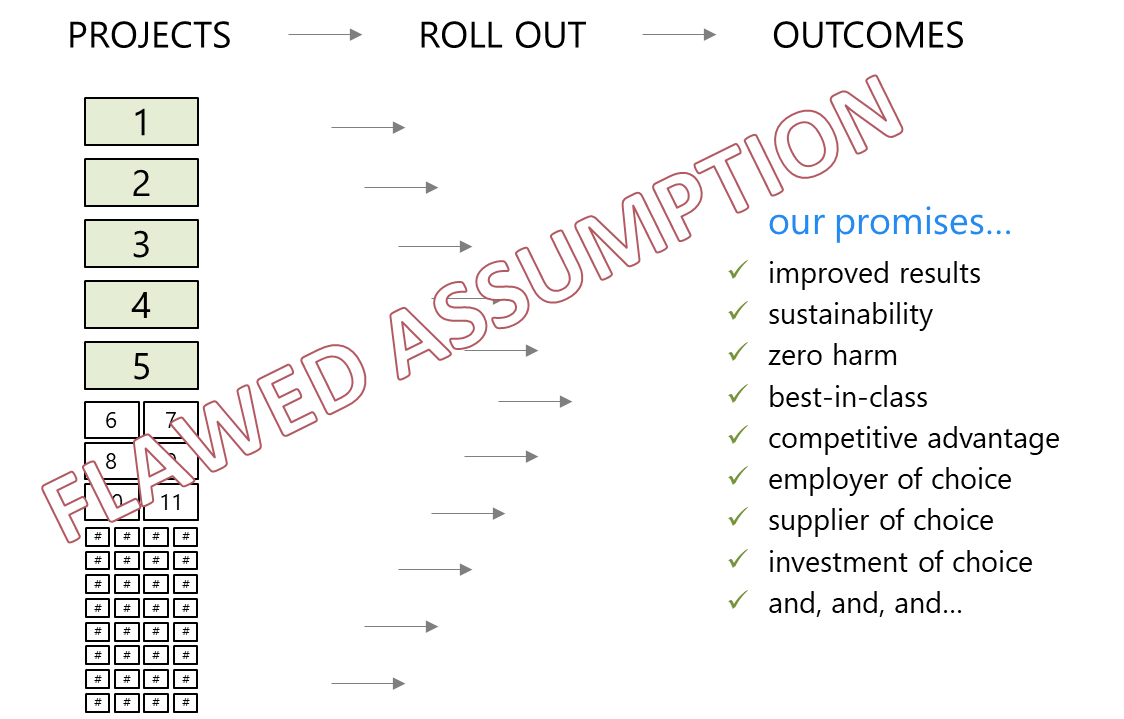hidden assumptions...
"a new structure
will deliver results"
"we need to roll this
out to everyone"
"they do not have
any choice"
"go slow;
change takes time"
Human systems behave in ways that are counter-intuitive for many of us. Surfacing and testing our hidden assumptions about how change works can be the difference between success and failure.
Even when we adopt a proven change methodology, many of the core assumptions managers embrace during steady-state, coupled with the hundreds of micro-decisions they make every week, can easily push our change effort off course.
Here are some of the more common flawed assumptions when leading significant change…
- we must have tangible solutions before we engage our stakeholders
- when times are tough, we simply need to tell people what to do, and they will comply
- updating our structure, procedures and systems will deliver the results we need
- project management is the key—plan, roll-out and monitor progress until completion

Solution–Implementation paradigms almost always hit a human wall of resistence. Our stated goal is implementing our solution. Traditional change management kicks in as we attempt to convince people our solution is the best way. At best, most people comply with our directives—mediocre results follow.
New assumption: inviting people to do something differently so they produce better results. Improving results and outcomes becomes our collective goal. Solutions become the tools people identify and use as they lead for change.

